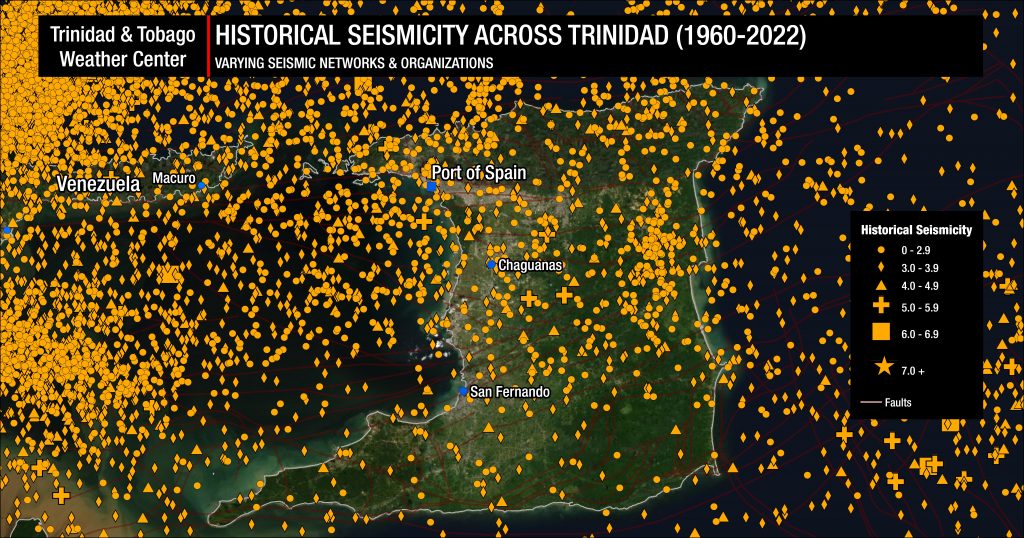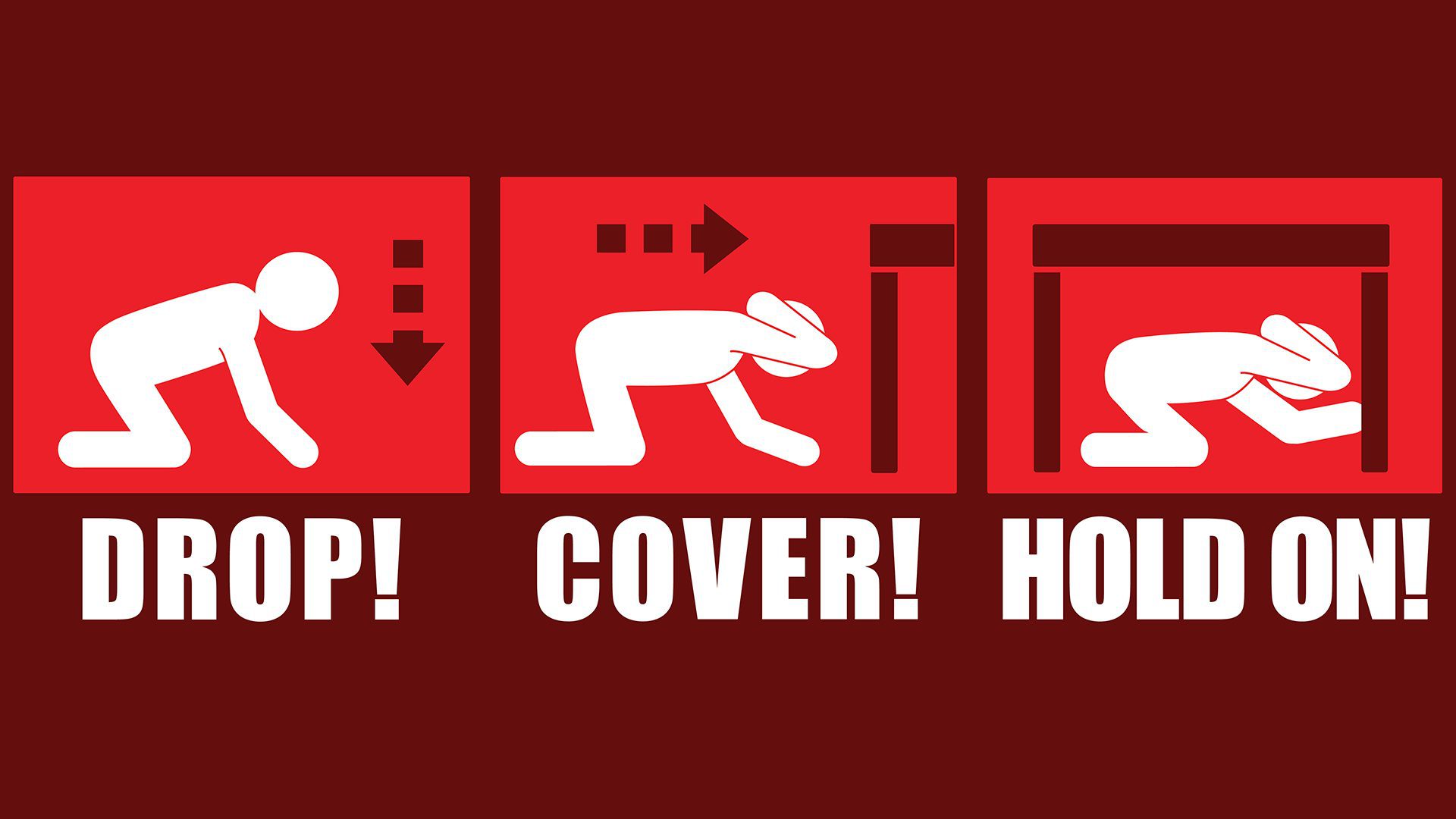According to the University of the West Indies Seismic Research Center (UWI SRC), on Tuesday, July 16th, 2024, at 12:45 AM, a burst of volcanic earthquakes was recorded beneath northern Dominica.
The UWI SRC, the authoritative organization for earthquakes, volcanoes, and tsunamis in the English-speaking Eastern Caribbean, says that while some of the 345 recorded earthquakes were sufficiently large to be felt, they were smaller than magnitude 3.5, the threshold for posting onto the UWI SRC’s social media platforms.
As of 7:30 AM, the rate of events has decreased, according to the UWI SRC.

Dominica has nine active volcanoes: Mornue aux Diables in the north, Morne Diablotins in the north-central, and seven in the southern portion: Morne Trois Pitons (Microtrin), Watt Woven Caldera, Morne Watt (Valley of Desolation), Morne Anglais, Grand Soufriere Hills, Morne Plat Pays, and Petite Savane.
Morne Watt (Valley of Desolation) was the last to erupt, according to the UWI SRC, with steam eruptions in 1880 and 1997.
Dominica’s Past Volcanic Activity
According to the UWI SRC, Dominica’s volcanoes have erupted many times and in different ways in the past. Some of the eruptions from the larger volcanoes and calderas have been very explosive, generating large pyroclastic flows and ash and then forming the large volcanic domes of Morne Diablotins, Morne Trois Pitons, and Morne Plat Pays.
The UWI SRC says, “Scientists believe there is a greater than 50% chance that an eruption will occur in this area within the next 100 years.”
Past eruptions large enough to leave a geological record have occurred in this area on average every ~500-1000 years, and it has been about 500 years since the last one (Patates). Furthermore, intense earthquake swarms in Southern Dominica indicate that magma may be moving towards the surface.
The Boiling Lake
The Boiling Lake is a volcano-hydrothermal feature located next to the Valley of Desolation in southern Dominica. It is roughly 60m in diameter and approximately 15 meters deep. The Boiling Lake is the second largest feature of its kind in the world, with the largest being Frying Pan Lake in New Zealand.
In its normal state of activity, the lake is boiling, but occasionally, there have been fluctuations in water levels and temperatures. Since 1876, there have been at least eight (8) recorded instances of changes in the water levels of the Boiling Lake. The more recent changes in lake water levels were noticed between November 2016 and January 2017, November 2021 to May 2022, and March and July 2024. During this period, water levels rose and fell several times.

In the past week, the UWI SRC noted “significant changes” to the water levels. According to officials, “The current state of the lake shows a large drop in water levels with steam emission from the main vent area now more clearly visible.”
The UWI SRC added, “The periods of instability that the lake have exhibited over the last 5 -10 years suggests a new pattern of behavior has been established which consists of frequent cycles of instability. Caution should be exercised when visiting the area during such periods.”
Scientists at the UWI SRC state that during these episodes, harmful gases, such as carbon dioxide, can be released. Also, steam explosions may occur since underlying vents that supply water to the lake, which may have become blocked, are cleared without warning.
As of July 11th, the UWI SRC said the ake is slowly refilling, and the water temperature has ranged between 70° and 80° Celsius. The lake will be continuously monitored using the cameras at the location, and any changes will be communicated. The observed changes at Boiling Lake are not currently considered to be an increase in volcanic activity in the area.
The UWI-SRC and the ODM – Office of Disaster Management, Dominica, are the official sources of information on volcanic activity in Dominica.
Has there been an increase in seismic activity?

Trinidad and Tobago and the surrounding region are very seismically active. Across the Eastern Caribbean, over 2,200 earthquakes are recorded annually. Since 1990, the University of the West Indies Seismic Research Centre has recorded an annual average of 280 earthquakes in the Trinidad and Tobago region (area bounded by 9.5°- 11.5°N & 59.5°W – 63.5°W). Of these 280 quakes, 50 of these seismic events are, on average, above magnitude 3.5.
Most earthquakes occur northwest of Trinidad in an area known as North of the Paria Peninsula, which has the second-highest seismicity in the Eastern Caribbean. According to the UWI SRC, approximately 65 events of magnitude 2.1 and above are located in the area annually.
However, the UWI SRC’s annual report for 2020 to 2021 states that regional seismic and volcanic activity has been elevated for several years.
On average, the Eastern Caribbean has seen a pattern of major (M7.0-M7.9) quakes every 20 to 30 years. That pattern has stayed true. The last major (M7.0-7.9) quake occurred north of Martinique in 2007.
Historical patterns indicate that great quakes (M8.0+) on the Richter Scale have occurred every century in the region. The probability of another event at that level is high since the last >M8.0 earthquake occurred in 1843. While it is impossible to say definitively when the next great quake will occur in the region, the time since the last one is now more than 170 years ago.
It is important to note that seismic activity cannot be predicted—meaning the precise time, date, magnitude, depth, etc., cannot be known ahead of time based on current research and technology.
Now is the time to create or go over your earthquake preparedness plan and know what to do during, before, and after an earthquake.










